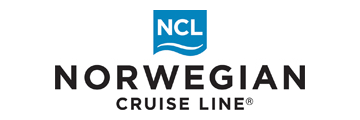This site uses cookies as defined in our Cookie Policy, by continuing to use this site you agree to their use.
Continue
| Arrive | Depart | ||||||
| 5th05 | MayMay | 202525 | Southampton, England, embark on the Norwegian Star | 16:00 | |||
Lying near the head of Southampton Water, a peninsula between the estuaries of the Rivers Test and Itchen, Southampton is Britain’s largest cruise port. It has been one of England’s major ports since the Middle Ages, when it exported wool and hides from the hinterland and imported wine from Bordeaux. The city suffered heavy damage during World War Two and as a result the centre has been extensively rebuilt, but there are still some interesting medieval buildings including the Bargate, one of the finest city gatehouses in England. | |||||||
| 6th06 | MayMay | 202525 | Le Havre, France | 07:00 | 19:00 | ||
Le Havre, founded by King Francis I of France in 1517, is located inUpper Normandy on the north bank of the mouth of the River Seine, which isconsidered the most frequented waterway in the world. Its port is ranked thesecond largest in France. The city was originally built on marshland andmudflats that were drained in the 1500’s. During WWII most of Le Havre wasdestroyed by Allied bombing raids. Post war rebuilding of the city followed thedevelopment plans of the well-known Belgian architect Auguste Perre. Thereconstruction was so unique that the entire city was listed as a UNESCO WorldHeritage Site in 2005. | |||||||
| 7th07 | MayMay | 202525 | Zeebrugge, Belgium | 08:00 | 17:00 | ||
In 1895 work began to construct a new seaport and harbour next to the tiny village of Zeebrugge, situated on the North Sea coast. Today the fast-expanding port of Zeebrugge is one of the busiest in Europe and its marina is Belgium’s most important fishing port. Many attempts were made to destroy this important port during both World Wars. Zeebrugge is ideally located for discovering the historic city of Bruges, and delightful seaside resorts with long sandy beaches can be visited by using the trams that run the whole length of the Belgian coast. Please note that no food may be taken ashore in Belgium. We shall not be offering shuttle buses to Bruges, but you may visit the city on an optional excursion: those visiting Bruges should note that there may be quite a long walk from the coach to the town centre. | |||||||
| 8th08 | MayMay | 202525 | IJmuiden, Netherlands | 07:00 | 17:00 | ||
North Holland’s ‘Gate to the North Sea’, IJmuiden has four harbours: the Vissershaven, Haringhaven, IJmondhaven and the Seaport Marina - the latter used by pleasure craft. It is the largest Dutch fishing port, but is a relatively young town: it grew up in the 1870s when the North Sea Canal was opened. During World War II, the German Navy demolished much of the town and built huge fortified concrete bunkers for their torpedo boats and submarines. After 1945, the town was rebuilt by the architect Willem Marinus Dudok. He designed IJmuiden’s most impressive building, the Stadhuis van Velsen, which houses local government offices. For cruise passengers IJmuiden is the gateway to Amsterdam, the Dutch capital and one of Europe’s truly great cities, where elegant canals are lined by old brick gabled houses, and superb art galleries and museums are home to some of the world’s best-known paintings. Please note that complimentary shuttle buses operate from the port to the centre of IJmuiden, not to Amsterdam. | |||||||
| 9th09 | MayMay | 202525 | At Sea | ||||
| 10th10 | MayMay | 202525 | Newhaven/Edinburgh, Scotland | 06:30 | 17:30 | ||
Newhaven is a district in the City of Edinburgh, Scotland, between Leith and Granton and about 2 miles north of the city centre, just north of the Victoria Park district. Formerly a village and harbour on the Firth of Forth. | |||||||
| 11th11 | MayMay | 202525 | Inverness, Scotland | 07:00 | 19:00 | ||
| 12th12 | MayMay | 202525 | At Sea | ||||
| 13th13 | MayMay | 202525 | Dun Laoghaire, Ireland | 07:00 | 21:00 | ||
| 14th14 | MayMay | 202525 | Belfast, Northern Ireland | 06:30 | 16:00 | ||
Before English and Scottish settlers arrived in the 1600s, Belfast was a tiny village called Béal Feirste ("sandbank ford") belonging to Ulster's ancient O'Neill clan. With the advent of the Plantation period (when settlers arrived in the 1600s), Sir Arthur Chichester, from Devon in southwestern England, received the city from the English Crown, and his son was made Earl of Donegall. Huguenots fleeing persecution from France settled near here, bringing their valuable linen-work skills. In the 18th century, Belfast underwent a phenomenal expansion—its population doubled every 10 years, despite an ever-present sectarian divide. Although the Anglican gentry despised the Presbyterian artisans—who, in turn, distrusted the native Catholics—Belfast's growth continued at a dizzying speed. The city was a great Victorian success story, an industrial boomtown whose prosperity was built on trade, especially linen and shipbuilding. Famously (or infamously), the Titanic was built here, giving Belfast, for a time, the nickname "Titanic Town." Having laid the foundation stone of the city's university in 1845, Queen Victoria returned to Belfast in 1849 (she is recalled in the names of buildings, streets, bars, monuments, and other places around the city), and in the same year, the university opened under the name Queen's College. Nearly 40 years later, in 1888, Victoria granted Belfast its city charter. Today its population is nearly 300,000, tourist numbers have increased, and this dramatically transformed city is enjoying an unparalleled renaissance.This is all a welcome change from the period when news about Belfast meant reports about "the Troubles." Since the 1994 ceasefire, Northern Ireland's capital city has benefited from major hotel investment, gentrified quaysides (or strands), a sophisticated new performing arts center, and major initiatives to boost tourism. Although the 1996 bombing of offices at Canary Wharf in London disrupted the 1994 peace agreement, the ceasefire was officially reestablished on July 20, 1997, and this embattled city began its quest for a newfound identity.Since 2008, the city has restored all its major public buildings such as museums, churches, theaters, City Hall, Ulster Hall—and even the glorious Crown Bar—spending millions of pounds on its built heritage. A gaol that at the height of the Troubles held some of the most notorious murderers involved in paramilitary violence is now a major visitor attraction.Belfast's city center is made up of three roughly contiguous areas that are easy to navigate on foot. From the south end to the north, it's about an hour's leisurely walk. | |||||||
| 15th15 | MayMay | 202525 | Cobh, Ireland | 08:30 | 17:00 | ||
Cork City's nearby harbor district has seen plenty of history. Cork Harbour's draws include Fota Island—with an arboretum, a wildlife park, and the Fota House ancestral estate—and the fishing port of Cobh. | |||||||
| 16th16 | MayMay | 202525 | Isle of Portland, England | 11:30 | 20:30 | ||
The Isle of Portland is a tied island, 6 kilometres long by 2.7 kilometres wide, in the English Channel. The southern tip, Portland Bill lies 8 kilometres south of the resort of Weymouth, forming the southernmost point of the county of Dorset, England. A barrier beach called Chesil Beach joins it to the mainland. | |||||||
| 17th17 | MayMay | 202525 | Southampton, England, disembark the Norwegian Star | 05:00 | |||
Lying near the head of Southampton Water, a peninsula between the estuaries of the Rivers Test and Itchen, Southampton is Britain’s largest cruise port. It has been one of England’s major ports since the Middle Ages, when it exported wool and hides from the hinterland and imported wine from Bordeaux. The city suffered heavy damage during World War Two and as a result the centre has been extensively rebuilt, but there are still some interesting medieval buildings including the Bargate, one of the finest city gatehouses in England. | |||||||
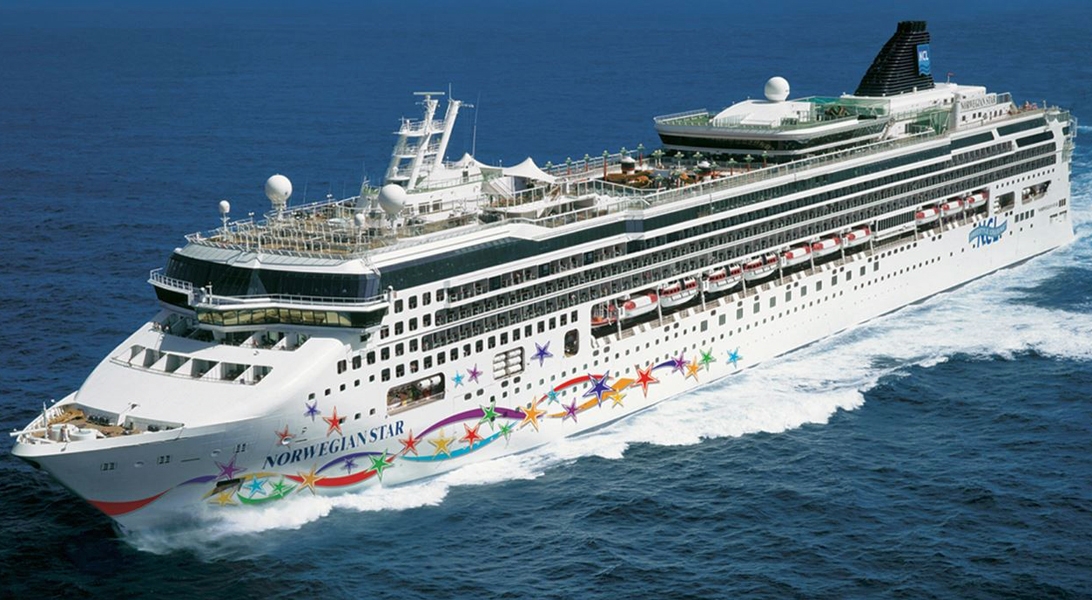











The images shown are for illustration purposes only and may not be an exact representation of what you find on the ship.
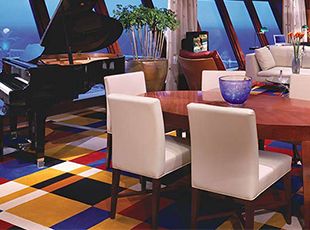
Norwegian Star Garden Villas accommodate up to seven guests. With three bedrooms, each with a king- or queen-size bed and luxury bath and shower, you have plenty of space to revel in. Also includes a living room, dining room as well as a private garden with hot tub, outdoor dining area and terrace to enjoy the beautiful view. Plus they can connect together so your group can spread out in luxury. Includes butler and concierge service.

You will have the perfect romantic getaway in these Penthouses that sleep up to three guests. Includes a bedroom with queen-size bed and luxury bath with shower and bathtub, in addition to the living area and dining area. Because these are aft-facing, they offer an amazing view from the large balcony. Includes butler and concierge service.
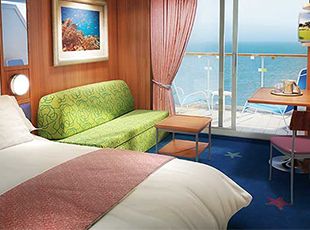
With room for up to three guests, Norwegian Star Balcony Staterooms have two lower beds that convert into a queen-size bed and some feature additional bedding to accommodate one more. Along with a sitting area, floor-to-ceiling glass doors and a private balcony with an amazing view. Plus some can connect so you can spread out yet stay together.
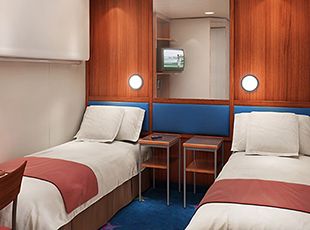
| Grade Code | From | To | |
| IF | Inside | £1,177 | £1,177 |
| IA | Mid-Ship Inside | £1,197 | £1,197 |
These Inside Staterooms are the most affordable way for you to cruise. With room for up to four, you'll have two lower beds that convert into a queen-size bed and some with additional bedding to accommodate up to two more guests.
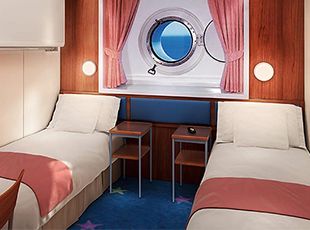
| Grade Code | From | To | |
| OK | Obstructed Oceanview | £1,372 | £1,372 |
These Oceanview Staterooms have a picture window or porthole with an obstructed view and can accommodate up to four guests and includes two lower beds that convert to a queen-size bed, one pullman and one pullout. Located mid-ship, they are close to all the action.

The Owner's Suites with Two Balconies are great for up to four guests. They include a living room, dining room and separate bedroom with king-size bed. Along with a mini-bar, luxury bath with whirlpool tub and an amazing double balcony. Plus they can connect to a Balcony or Penthouse with Large Balcony so you can spread out yet stay together. Includes butler and concierge service.
The images shown are for illustration purposes only and may not be an exact representation of what you find on the ship.
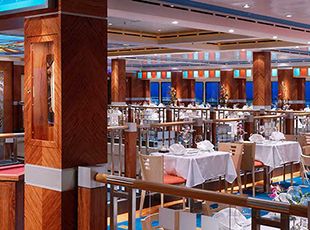
Enjoy a complimentary Asian restaurant featuring freshly prepared noodles, delicious wok fried dishes, authentic soups and more.

Available 24 hours a day, simply pick up the phone and order breakfast, lunch, dinner or late-night munchies. A room service fee may apply.
Price Per Person: Room Service Fee may apply.
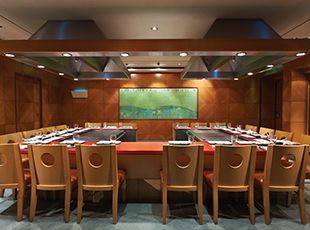
The sizzles and surprises never cease at our authentic Japanese restaurant. Sit around a lively shared table as a skillful chef slices, chops and grills steak, chicken and seafood on a large steel grill right before your eyes.
Price Per Person: Cover Charge Applies
The images shown are for illustration purposes only and may not be an exact representation of what you find on the ship.
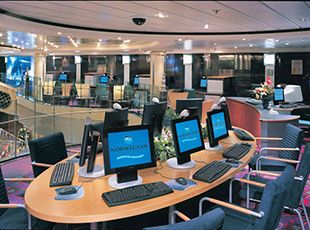
No matter how far you are from home, you can stay in touch. The Internet Café can also be used as a computer lecture and training centre.
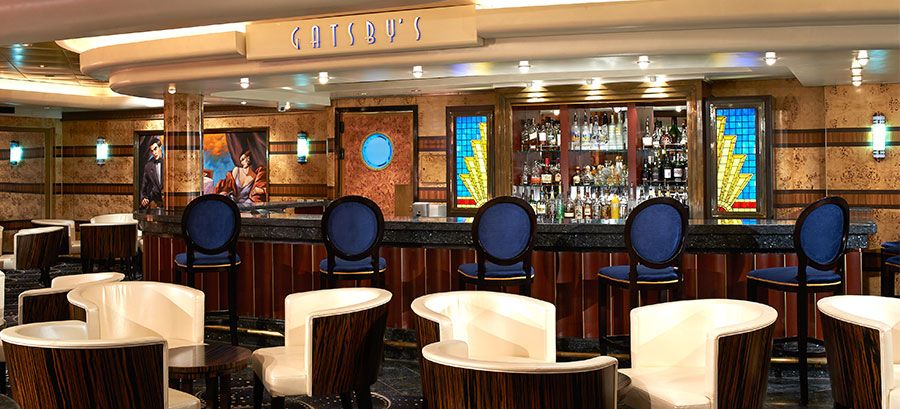
Known for a premium selection of champagne and vodka, caviar, Paté, and Foie Gras. The cool sophistication and charm of this establishment makes it an ideal venue for an intimate cocktail party or an evening of intrigue and fun.

It's showtime! And we've got a really big show for you. Enjoy Broadway and Vegas-style shows with cocktails before or after dinner in a traditional European opera house style auditorium reaching up three decks.
The images shown are for illustration purposes only and may not be an exact representation of what you find on the ship.
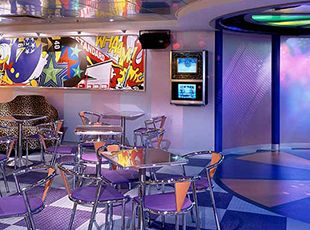
A hip place for teens to hang out. It features a video wall, jukebox, football table and air hockey. By night the Teen Club turns into a teen disco.
The images shown are for illustration purposes only and may not be an exact representation of what you find on the ship.
| 12 nights aboard the Norwegian Star | |||
| Upgrade to More At Sea™ for £349pp and receive the benefits shown below. Book a Haven suite or suite (not Club balcony suites) and receive More At Sea™at no additional cost. | |||
| Premium Beverages
Includes alcoholic and non-alcoholic branded drinks served in all bars, lounges and restaurants throughout your cruise. | |||
| Speciality Dining
Enjoy dining opportunities in selected speciality restaurants depending on number of nights and cabin type. | |||
| Shore Excursion Credits
Receive $50 shore excursion credit per stateroom per excursion. | |||
| Wi-Fi Powered By Starlink
Receive up to 150 minutes Wi-FI per person (guest 1 and 2 only) | |||
| 3rd & 4th Guest Pay Taxes Only
Guests 3 and 4 in the stateroom pay only the applicable tax for the cruise. Available on select sailings only. | |||
| Award winning onboard entertainment | |||
| Complimentary 24-hour room service | |||
| Port Taxes and Fees | |||
 | ABTA and ATOL Protection* | ||
Date 5th May 2025 |
Nts 12 |
Interior £1,167pp |
Oceanview £1,362pp |
Balcony £2,032pp |
Suite £2,612pp |
Date 5th May 2025 |
Nts 12 |
Interior £1,167pp |
Oceanview £1,362pp |
Balcony £2,032pp |
Suite £2,612pp |
| Interior staterooms from | £1,167pp | ||
| IA | Mid-Ship Inside | £1,197pp | |
| IF | Inside | £1,177pp | |
| IX | Sail Away Inside (Guarantee) | £1,167pp | |
| I4 | Family Inside | £1,202pp | |
| Oceanview staterooms from | £1,362pp | ||
| OF | Mid-Ship Oceanview Porthole Window | £1,377pp | |
| OK | Obstructed Oceanview | £1,372pp | |
| OX | Sail Away Oceanview (Guarantee) | £1,362pp | |
| O4 | Family Oceanview | £1,387pp | |
| Balcony staterooms from | £2,032pp | ||
| BX | Sail Away Balcony (Guarantee) | £2,032pp | |
| Suite staterooms from | £2,612pp | ||
| MA | Mid-Ship Mini-Suite with Balcony | £2,632pp | |
| MX | Sail Away Mini-Suite (Guarantee) | £2,612pp | |
Fusion Cruises when selling travel arrangements is a trading name of The Midcounties Co-operative Ltd. Fusion Cruises is an Accredited Body Member of Midcounties Co-operative Travel Consortium. (ABTA:P6652, ATOL:6053).
Book with Confidence. We are a Member of ABTA which means you have the benefit of ABTA’s assistance and Code of Conduct.
Some of the flights and flight-inclusive holidays on this website are financially protected by the ATOL scheme but ATOL protection does not apply to all holiday and travel services offered on this website. This website will provide you with information on the protection that applies in the case of each holiday and travel service offered before you make your booking. If you do not receive an ATOL Certificate then the booking will not be ATOL protected. If you do receive an ATOL Certificate but all parts of your trip are not listed on it, those parts will not be ATOL protected. Please see our booking conditions for information, or for more information about financial protection and the ATOL Certificate go to: www.caa.co.uk
